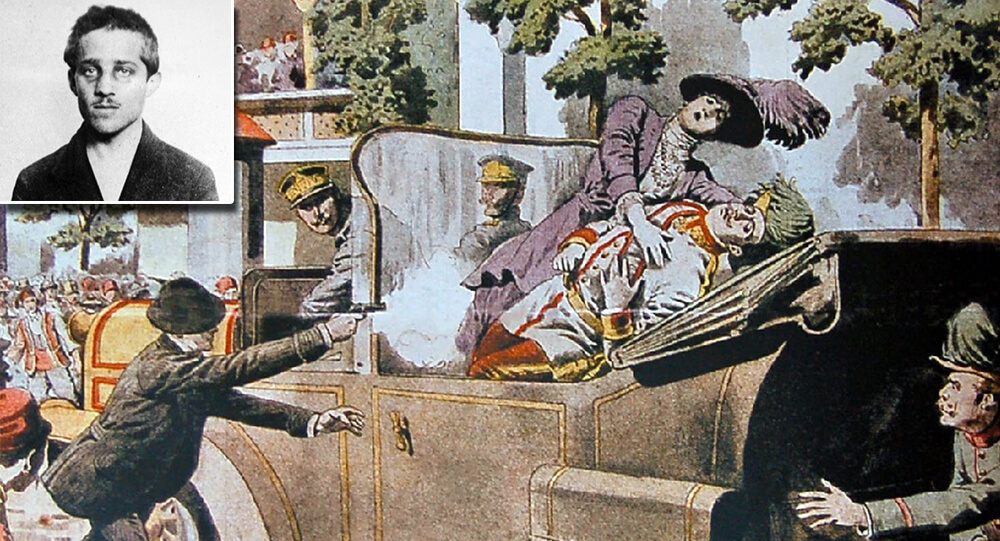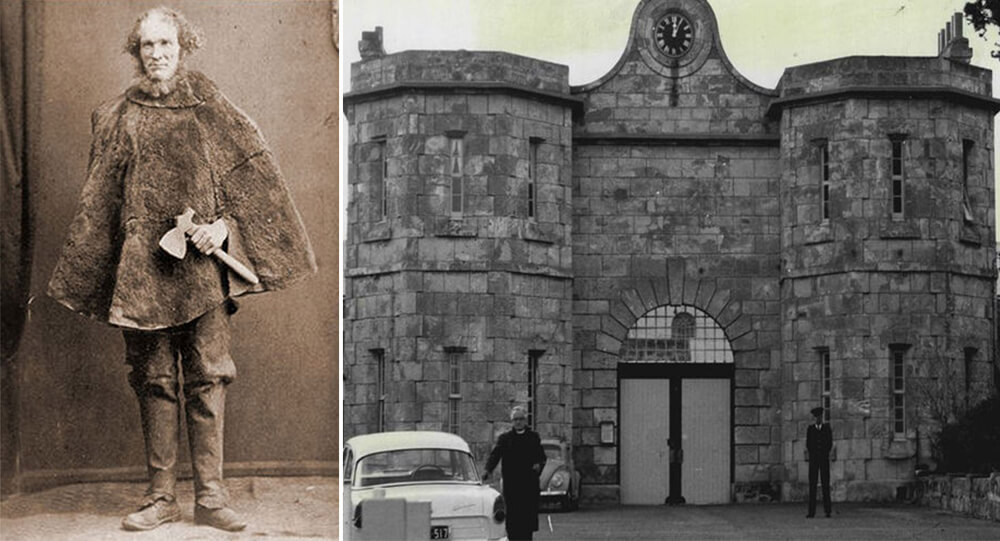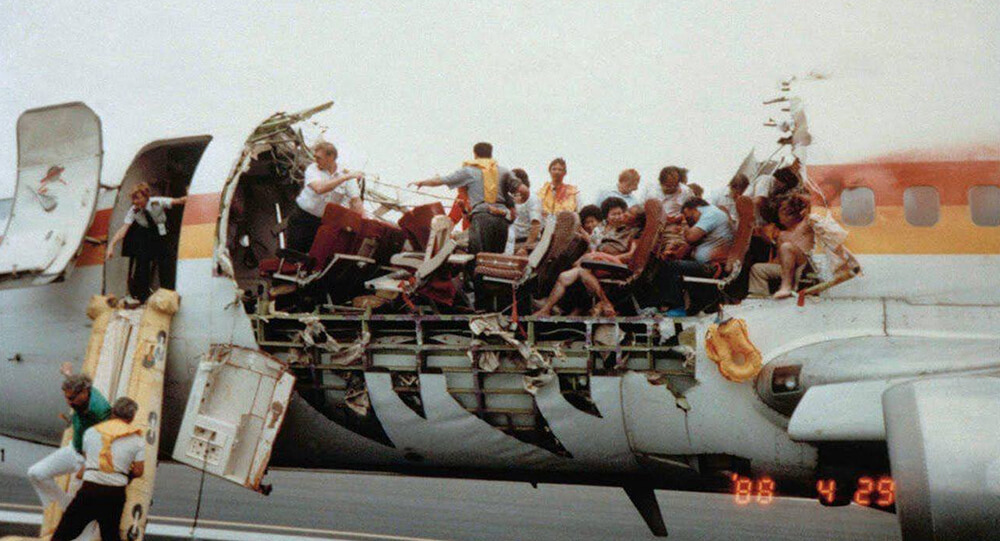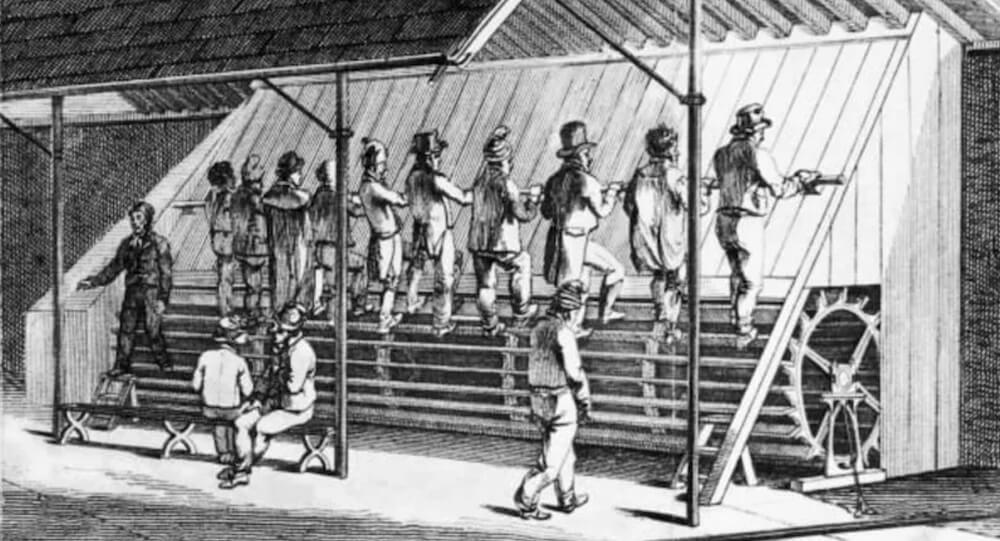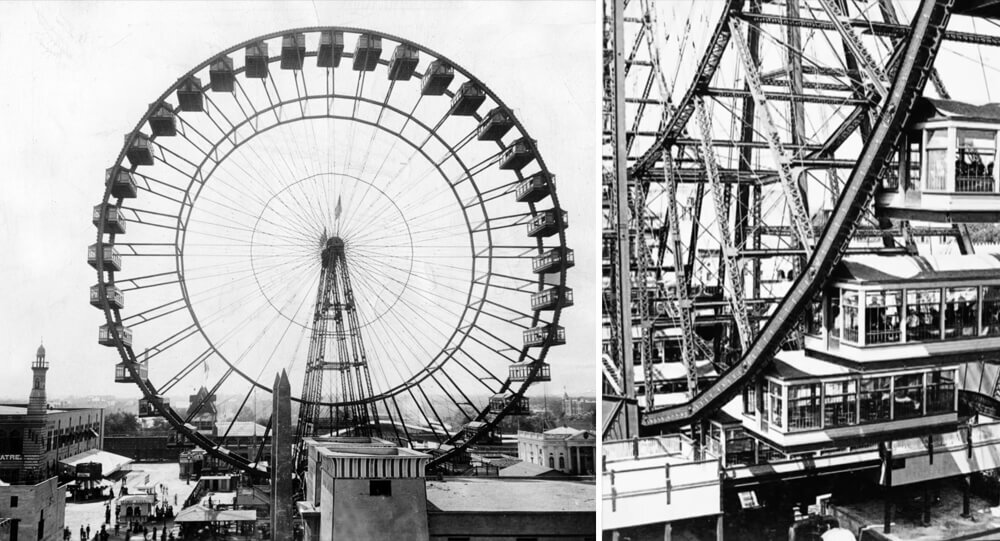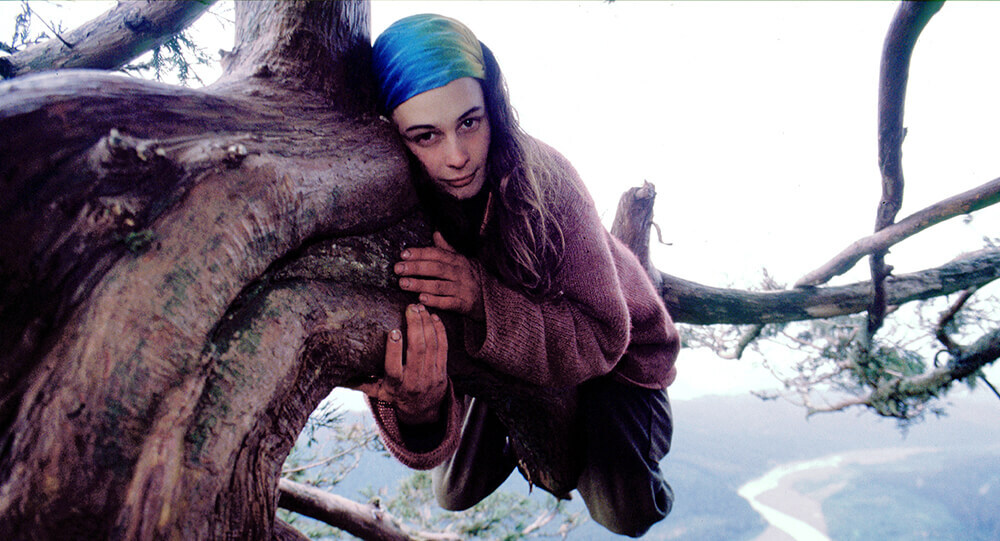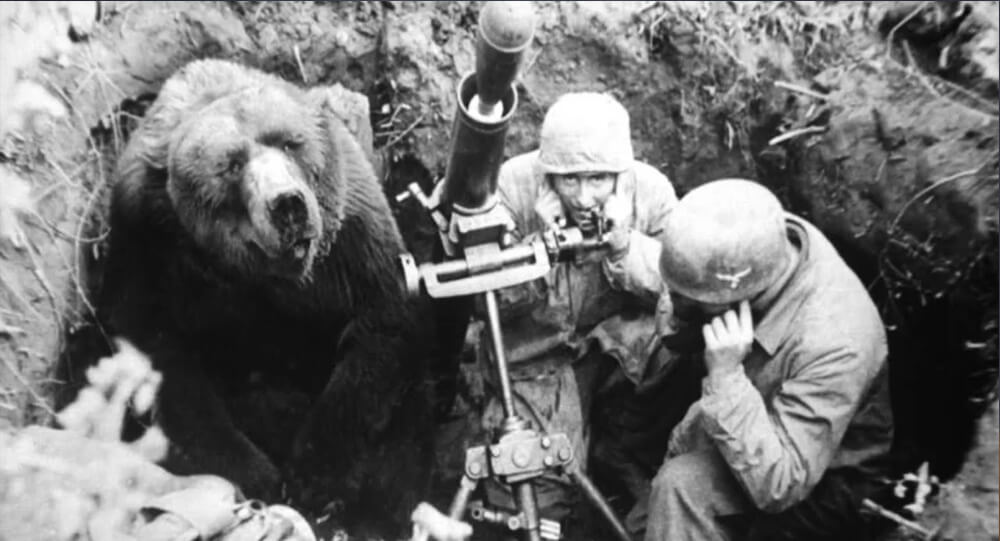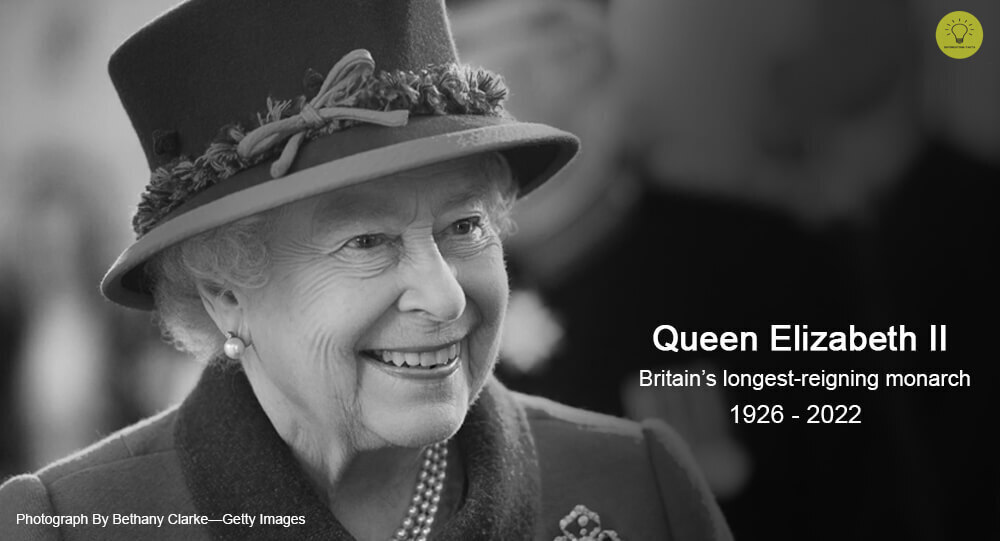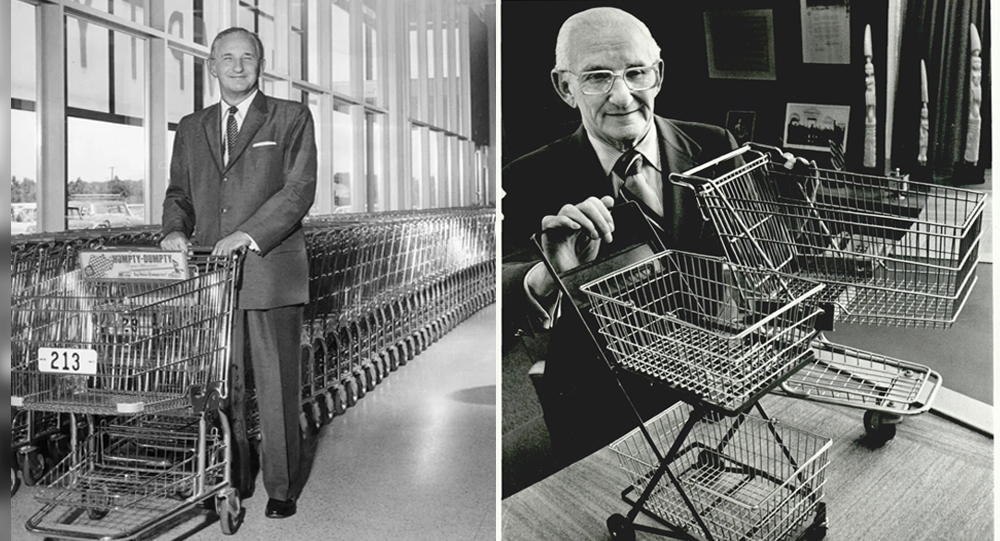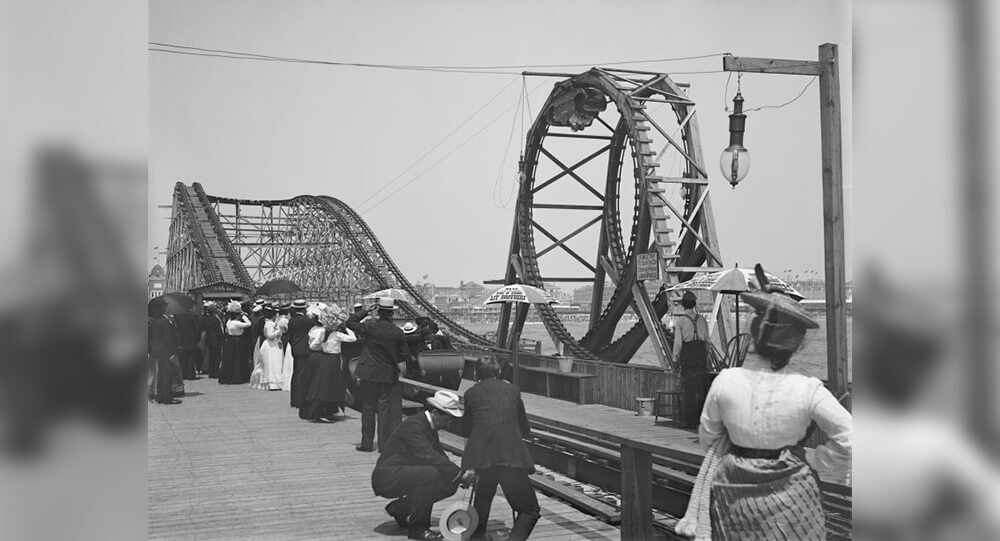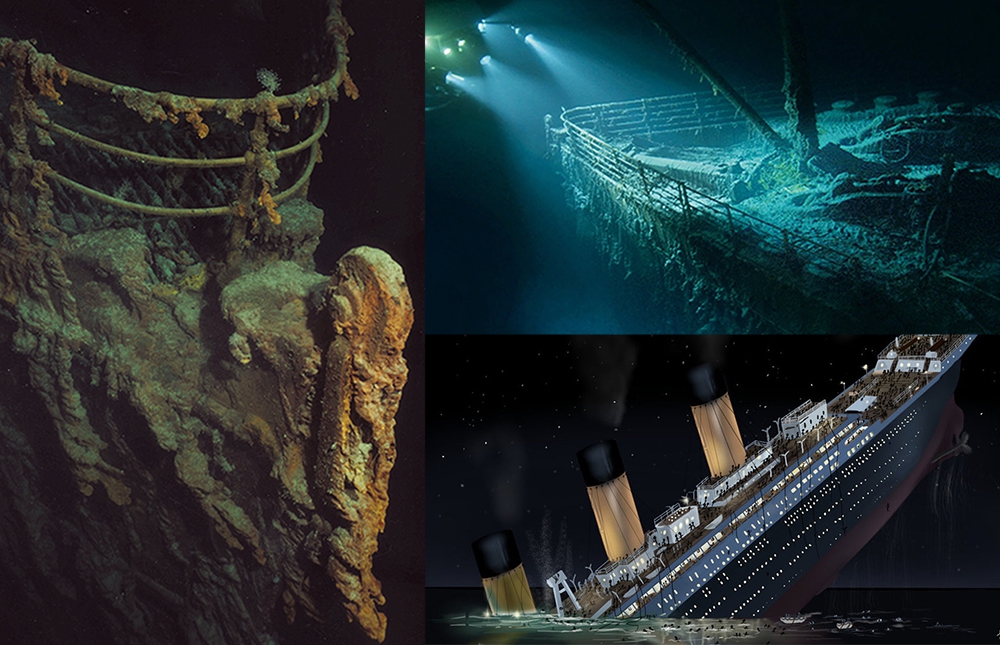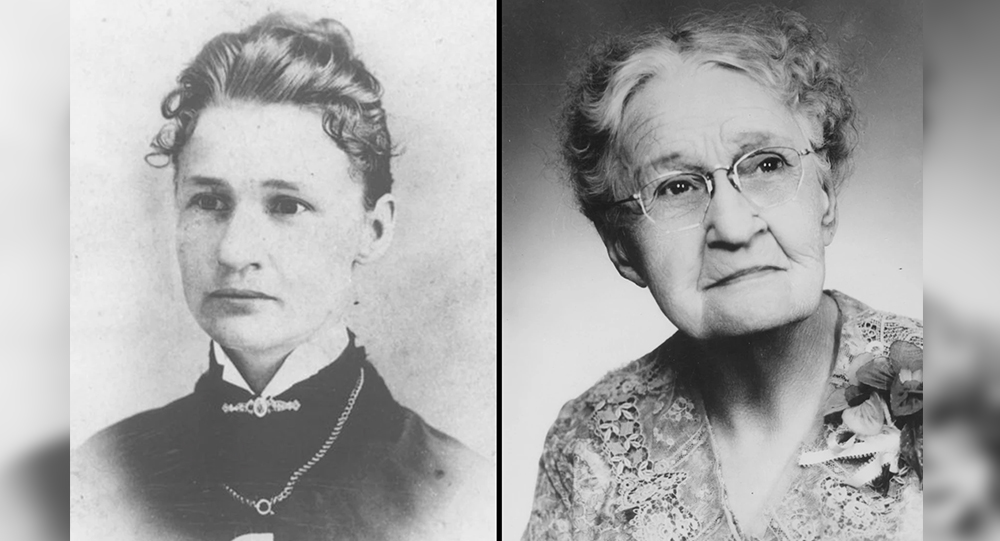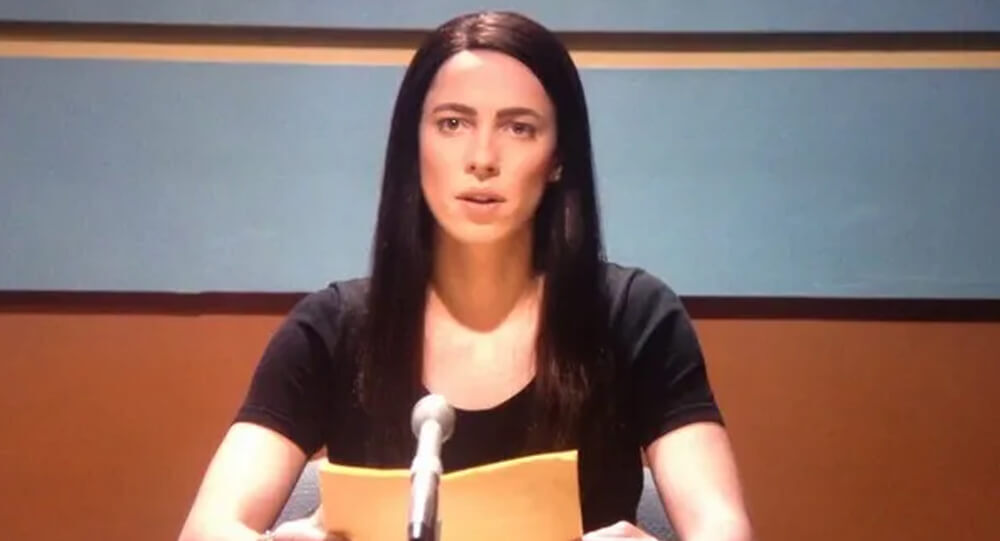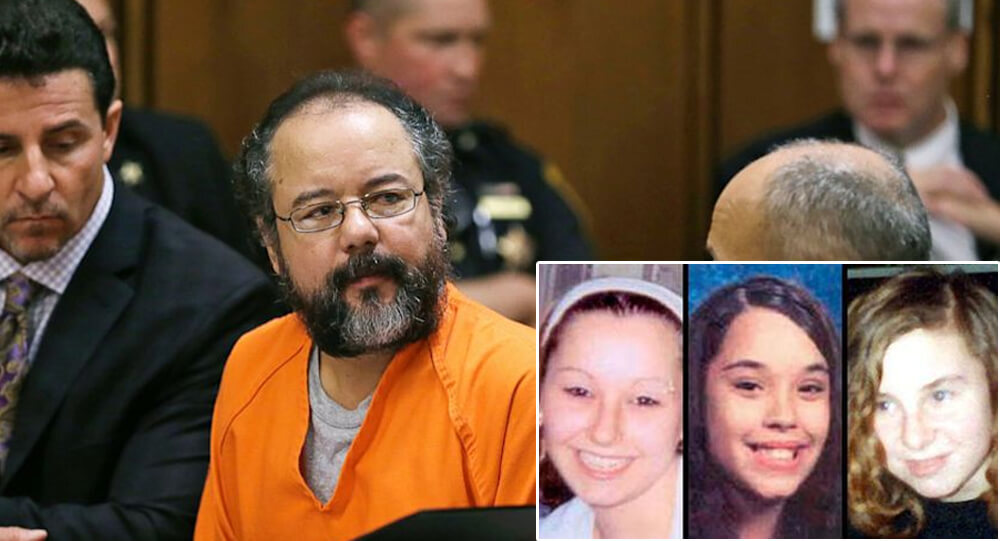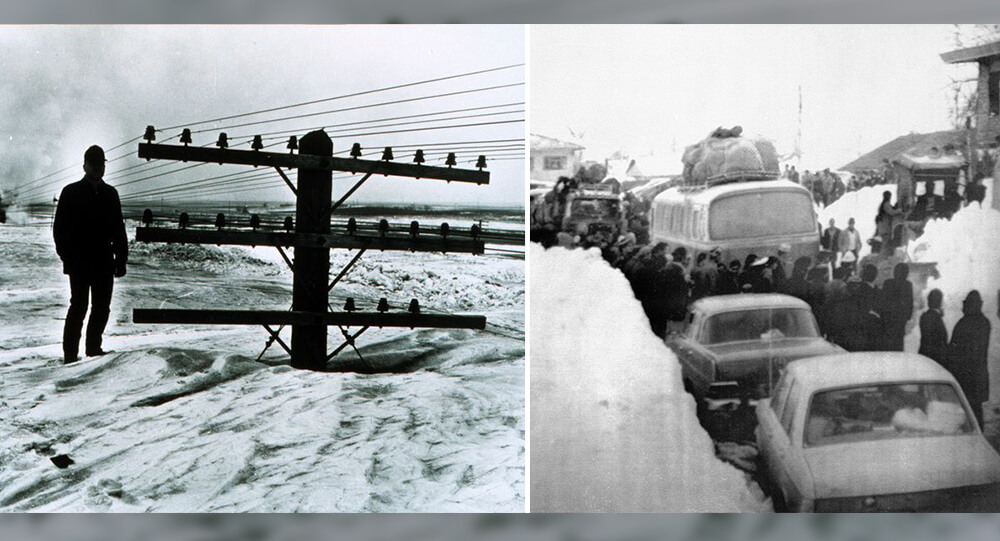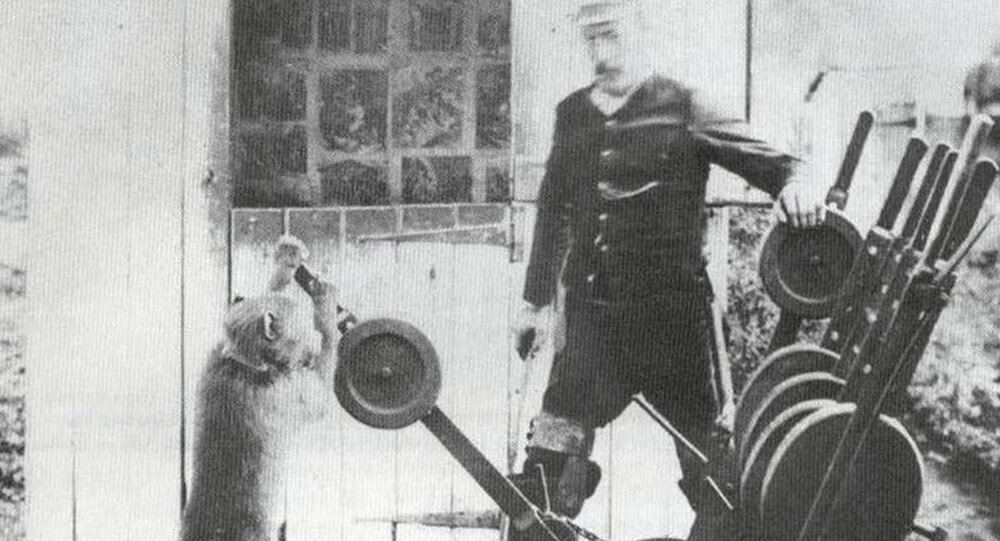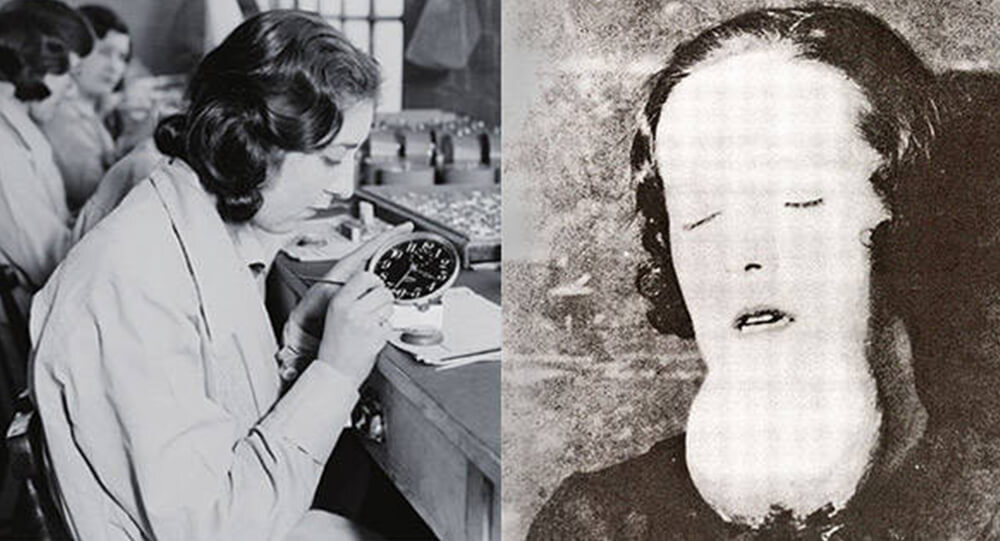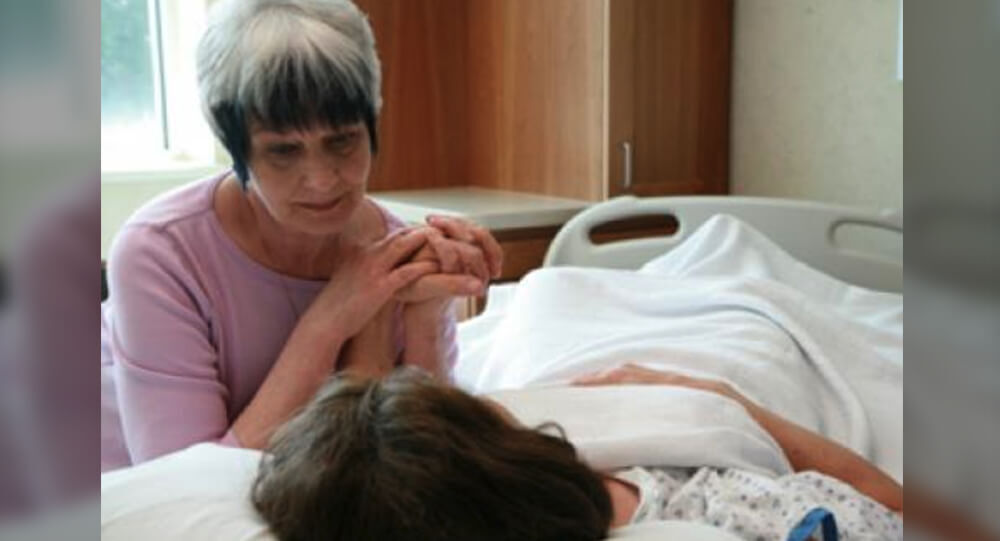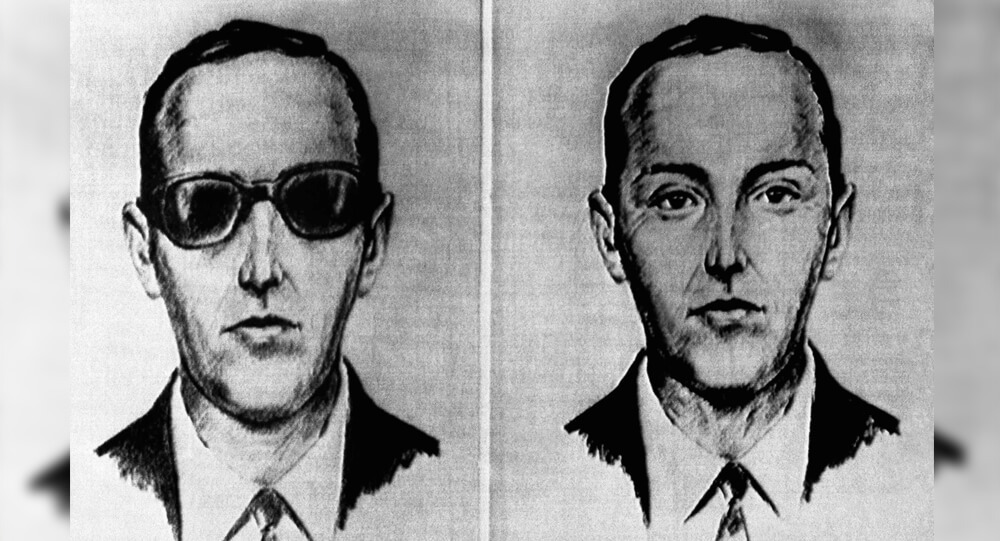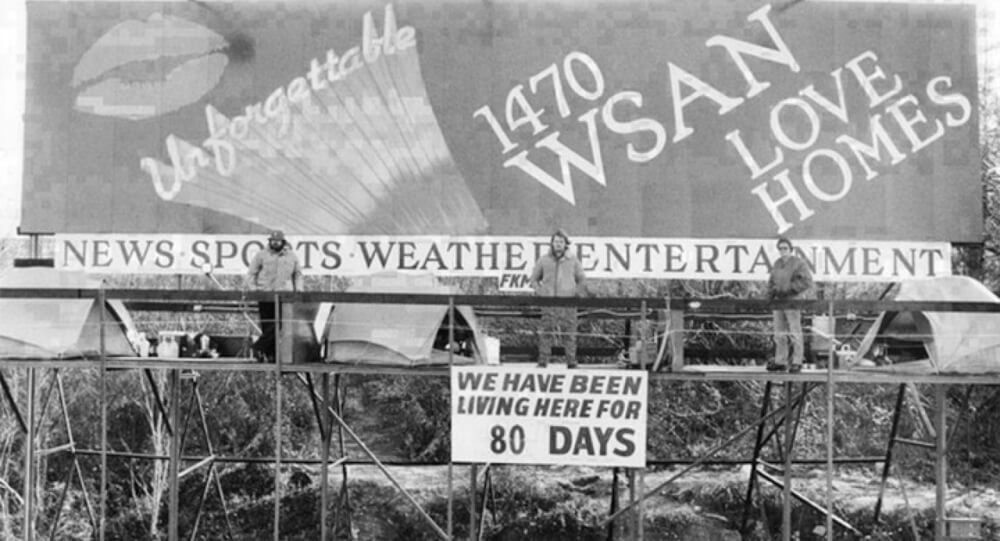
Forty years ago, a radio competition began in the Lehigh Valley and resulted in a worldwide media frenzy.
In an attempt to gain publicity, the staff of Allentown radio station WSAN-AM, which was undergoing a rebranding, decided to hold a contest on September 20, 1982.
It was dubbed a “endurance contest,” with three participants competing to see who could spend the longest on the platform of a WSAN billboard located in Whitehall Township, across from the Lehigh Valley Mall, off of Route 22.
A new mobile home would be awarded to the winner.
However, the competitors turned out to be more serious than anticipated, and it took 261 days, a drug bust, and entreaties from government officials to bring the competition to an end.
Ned Teter, a WSAN radio DJ who worked the entire competition, said, “We were all taken a little off guard.”
“You do realize that this occurred long before social media, cell phones, or anything else like that? In 1982, nothing becomes viral. However, this was picked up by a few major publications, and after that, there were waves upon waves of coverage.
A housing crisis
The contestants were:
Mike MacKay was a newlywed in his first year of marriage and had a job. In a 2017 documentary titled “Billboard Boys,” it is stated that MacKay submitted 47,000 contest entries to WSAN, stating that he was unable to afford housing even with a steady job. In 2006, MacKay passed away.
It is purported that Dalton Young entered roughly a thousand contests shortly after his release from the United States. military. While residing on the billboard, he was ultimately taken into custody by an undercover police officer for marijuana-related offenses.
There are rumors that Ron Kistler submitted 4,004 entries to the WSAN office. He claimed in the documentary that he was only competing for a house, not for attention.
For more than a year, the competitors occupied the billboard platform equipped with space heaters, tents, toilets, phones, radios, and even a pulley system that allowed loved ones to bring them food and other necessities.
Housing shortages in the Lehigh Valley in the early 1980s contributed to the competitors’ devotion. Mobile homes were not affordable because the region’s manufacturing industry was in decline, despite their valued $18,000 (roughly $55,000 today).
Teter remarked, “These were three guys that, you know, they’re out of work.” These unfortunate people served as a symbol of the era. In 1982, we were in the epicenter of the Rust Belt, where jobs were limited.
One person who is familiar with the story well claims that the Lehigh Valley’s current affordable housing crisis isn’t all that different.
The 2017 documentary “Billboard Boys” about the radio competition was directed by Pat Taggart.
According to Taggart, “there isn’t enough housing on the market, and prices are sky high. We have a different housing crisis today.” “Thus, while different, there is still a significant gap between the wealthy and the poor, as well as extreme economic stress both then and now.”
Public opinion sours
According to Taggart, the Lehigh Valley’s public sentiment toward the men on the billboard grew sour during the competition.
After about six months, the police accused Young of being a marijuana dealer while residing on the billboard. The Lehigh Valley residents then began to grow irritated with the competition.
“People’s perception had significantly changed from finding this fascinating and cool to thinking it was a disgrace to the Lehigh Valley,” according to Taggart. People driving by stopped to stare at the men on the billboard, saying, “You know, guy’s dealing drugs up there, and there was fender benders constantly,” Taggart said. Taggart said bystanders also used to hang out and party at the base of the billboard all night long and it was common to find empty beer bottles and other garbage underneath it in the mornings after a weekend.
An abrupt end
The competitors on the billboard were a constant source of pressure.
Following Young’s arrest and elimination from the competition, Taggart remarked, “You have two guys left – Mike MacKay and Ron Kistler.” “And they just stayed, making it very evident that they had no intention of leaving without a place to live.”
According to Taggart, the competitors’ focus shifted toward the end of the competition from competing against each other to competing against the radio station.
On June 7, 1983, WSAN and the contest’s sponsor, Love Homes, gave in to public and political pressure.
They offered a free vacation, a Chevy car, and a mobile home to each of the two surviving competitors.
That was the end when MacKay and Kistler descended from the billboard simultaneously.
The story will hopefully still be made into a feature film, according to director Pat Taggart.

Franz Ferdinand’s Assassination that sparked World War I
Archduke Franz Ferdinand of Austria and his wife Sophie are shot to death by a Bosnian Serb nationalist during an official visit to the Bosnian capital of Sarajevo on June 28, 1914. The killings sparked a chain of events that led to the eruption of World War I by early August.

Moondyne Joe: The story of Australia's most notorious prison escapee
A man named Joseph Bolitho Johns (A.K.A Moondyne Joe) broke out of Australian prisons so many times that the police were compelled to build a special cell just for him. He escaped from that as well.

The incredible story of a plane that lost its roof in mid-flight and the light signal that saved 94 lives.
On April 28, 1988, Aloha Airlines flight 243 was on the way to Honolulu from Hilo when a huge portion of the upper part of the fuselage blew off the airplane.

History of Treadmill, punishment for prisoners
Treadmills were originally a punishment used to harness human power on a giant wheel used to grind grains, hence the name "treadmill." The History of Treadmill

how Ferris wheel invented
In 1891, Chicago challenged engineers to create a structure to surpass the Eiffel Tower for the World's Columbian Exposition. George Washington Gale Ferris jr. responded with the original Ferris Wheel, a giant rotating structure elevating visitors above the city. This invention became an iconic attraction at the fair.

How Greek prime minister in 1830’s tried to spread the potato in Greece
A Greek prime minister in 1830’s tried to spread the potato in Greece but people weren’t interested so he put armed guards in front of shipments of potatoes so people would think they were important. People later started stealing these potatoes a lot which spread the crop to all of Greece.

The incredible story of Julia "Butterfly" Hill and her legacy
American environmental activist Julia “Butterfly” Hill lived in a 1500-year-old California Redwood tree for 738 days to prevent it from being cut down by the Pacific Lumber Company. The Simpson’s episode “Lisa the Tree Hugger” was inspired by Hill’s story.

The 440-pound bear named Wojtek and his World War II battle against the Nazis
Polish troops raised an orphaned bear cub during WWII. He enjoyed drinking beer, and was trained to salute. He became officially enlisted as a member of the forces, and helped carry artillery during battle.

15 interesting facts about Queen Elizabeth II
Queen Elizabeth II, who ruled Britain for 70 years, has away at the age of 96. She was the country's longest-reigning monarch. Here are some little-known facts about her.

Sylvan Goldman: The Visionary Who Revolutionized Shopping with the Cart
The inventor of shopping carts, Sylvan Goldman, had to hire several male and female models to push carts around in his store, demonstrate their utility, and explain their use to other customers, due to not catching on initially.

Roller Coasters were First Invented to Distract People from sin
Roller coasters were invented to distract Americans from sin. In the 1880s, hosiery businessman LaMarcus Thompson didn’t like that Americans were going to places like saloons and brothels and created the first roller coaster on Coney Island to persuade them to go there instead.

8 Interesting Facts About The Unsinkable Ship, TITANIC
If you ask your friends what's the most famous ship in history the answer in most cases will be the same, of course the legendary Titanic. Its history is full of mysteries, at first it was a source of hope and national pride as well as proof of the triumphs of mankind but it soon became a source of nostalgia and pain, the extent of which cannot be described in words.

Susanna Salter: The Trailblazing Story of America’s First Female Mayor
In 1887, Susanna Salter became the first female mayor in the United States, elected in Argonia, Kansas. Her nomination was initially a prank by men opposing women in politics. However, she won by a landslide and served effectively, inspiring the women’s suffrage movement and breaking barriers for women in leadership.

Reason Behind The Suicide Of Christine Chubbuck Live On Air
Actor Rebecca Hall had serious reservations about tackling the macabre story around why Chubbuck killed herself in 1974. So what changed her mind?

The Horrific story of Ariel Castro and the Cleveland abduction
Cleveland abduction victims Gina DeJesus, Michelle Knight, and Amanda Berry were forced to live in Ariel Castro's house of horrors for 10 years. He raped and beat them until they escaped in 2013.

The worst blizzard in recorded history: the 1972 Iran blizzard
The deadliest snowstorm ever recorded occurred in Iran in 1972. It lasted for a week, burying areas in 26 feet of snow and killing over 4,000 people, including the entire populations of three villages.

How Cleveland's Balloonfest in 1986 Turned Into a Public Tragedy
In Cleveland, Ohio, United Way broke the world record by deflating nearly 1.5 million balloons as part of a publicity stunt to raise money. The balloon obstructed a US Coast Guard search for two boaters who were subsequently discovered to have drowned, blocked airport runways, and blocked land and waterways.

Jack the Baboon operated a railroad, earned a living, and never made a mistake
A baboon worked as a signalman for the railroad in the late 1800s. He never made a mistake and worked for the railroad until the day he died.

The true story Of The Radium Girls that change US labor laws
Hundreds of young women worked in clock factories during World War I, painting watch dials with luminous radium paint. The company lied about the risk of radiation, claiming there was no danger, which resulted in the death of the young women.

The History Behind the “No One Dies Alone” Program
In 1986, while doing a night shift at the hospital, Sandra Clarke, a registered nurse, was asked by an elderly patient to stay. She promised to be back after checking on her other patients, but by the time she returned, the gentleman had passed away. Clarke became one of the key figures in launching No One Dies Alone, a program that allows volunteers to sit with terminal patients who have no one else.

Man's Blood Helped Save Millions of Babies
Australian blood donor James Harrison has been one of our most impressive and valued donors, having donated for 60 years. Know his story, how he was a pioneer of our Anti-D program, and why this matters.

D.B. Cooper: Man who hijacked a plane and jumped out with a $200,000
On November 22, 1971, DB Cooper hijacked a Boeing 727, drank a whisky, smoked a fag, and then jumped out of the plane with $200,000. He was never again seen.

The Mouth of Truth: Ancient Rome’s Legendary "Lie Detector" That Bit Off Hands
Discover the chilling legend of the Mouth of Truth (Bocca della Verità) in Ancient Rome—a massive carved stone face believed to bite off the hand of anyone who lied while inserting their hand into its gaping mouth. Uncover the truth behind its eerie reputation and how this ancient artifact became a symbol of honesty and fear.

How Sleep Deprivation Was Once Used as Torture
Sleep deprivation, long before modern interrogation techniques, was considered a “clean” and effective form of torture—leaving no physical scars, yet breaking minds with haunting silence. Victims endured days and nights without rest, leading to vivid hallucinations, disorientation, and psychological torment. This article traces the dark history of sleep deprivation as a weapon, examines the science behind its effects on the brain, and shines a light on the painful balance between human endurance and cruelty in the annals of coercion.

Max Headroom Incident: America’s Creepiest TV Hack
In 1987 a man hijacked a television station during an episode of Dr. Who and wore a Max Headroom mask and uttered nonsense, and he still hasn’t been caught

